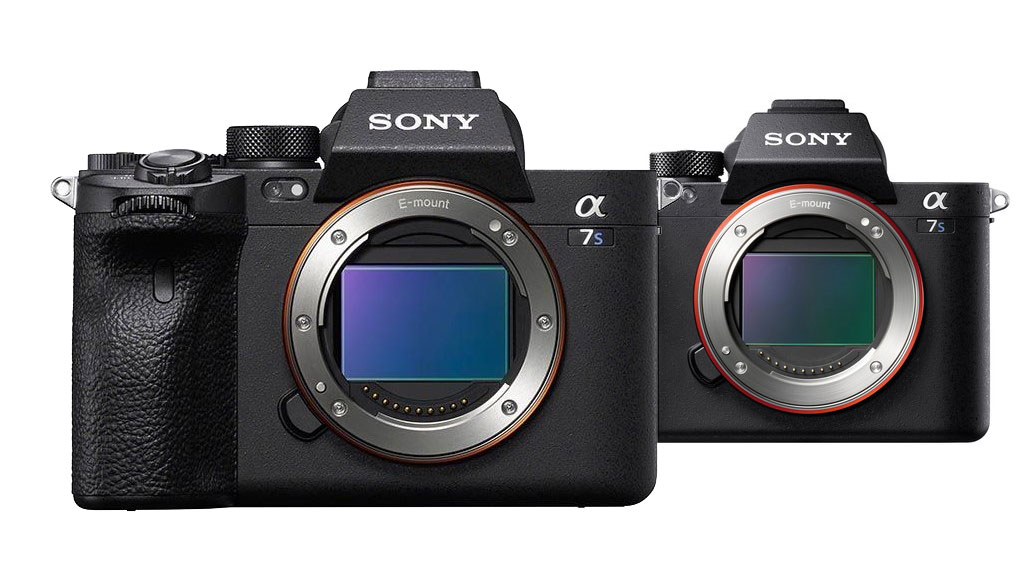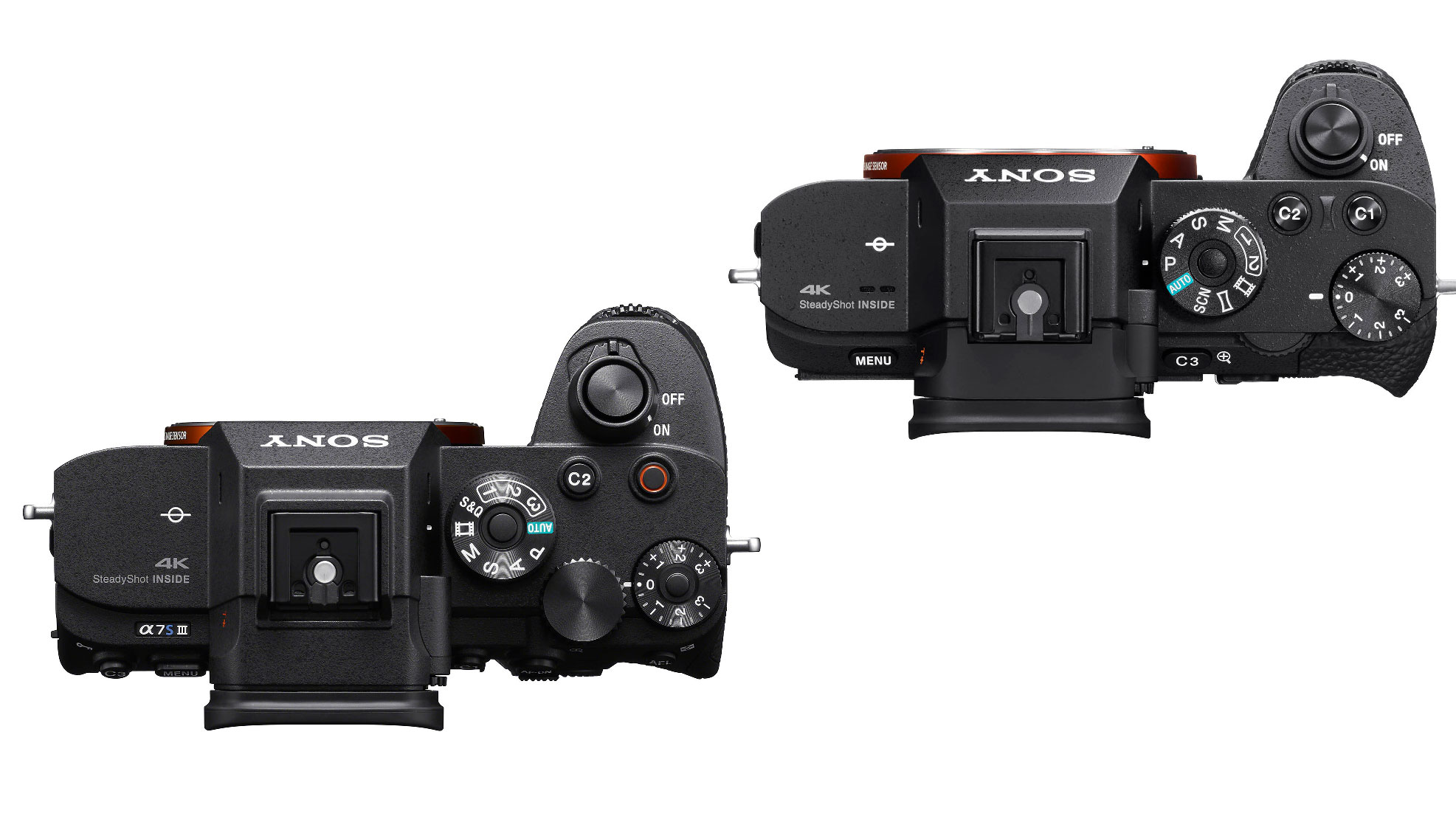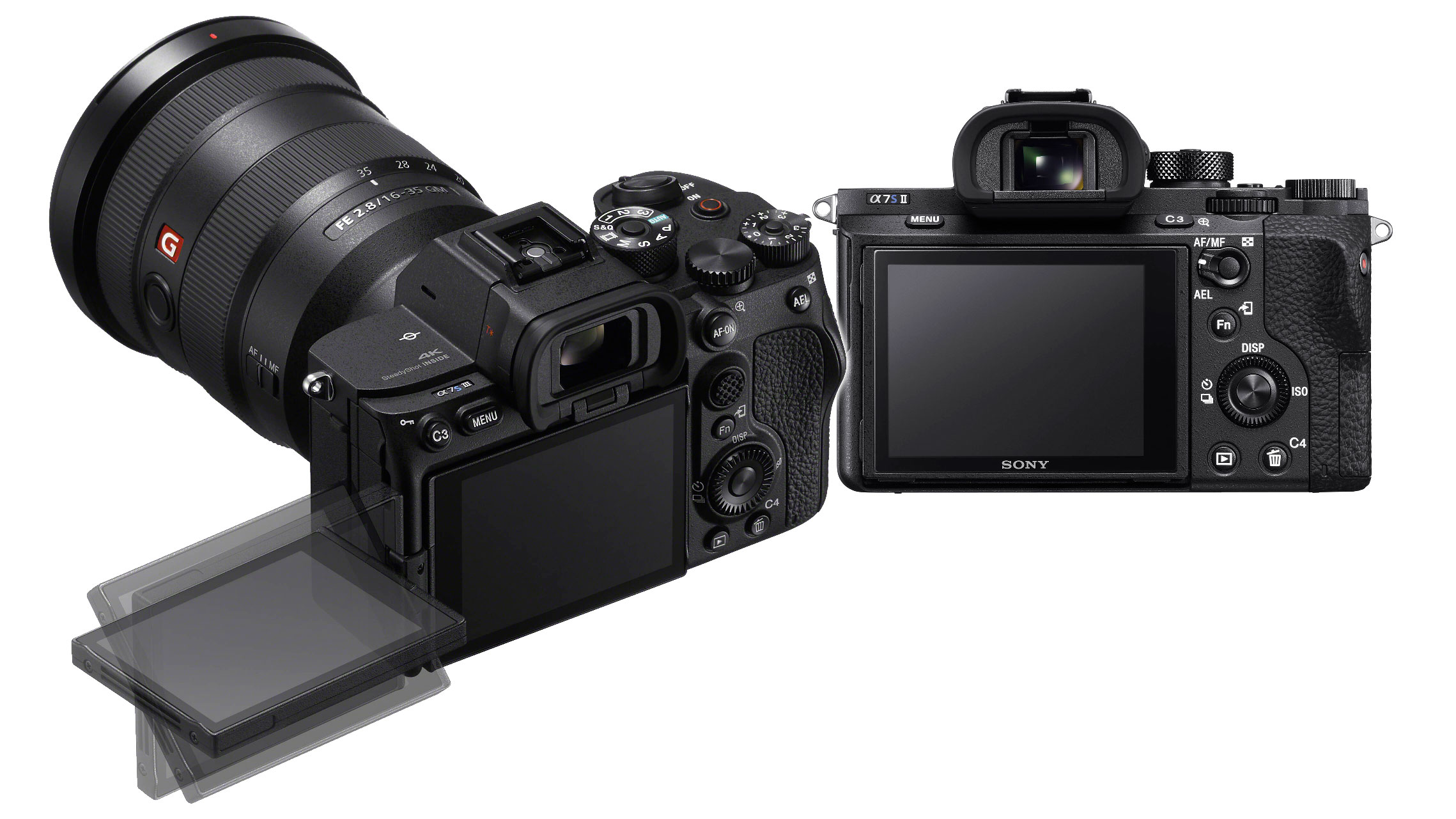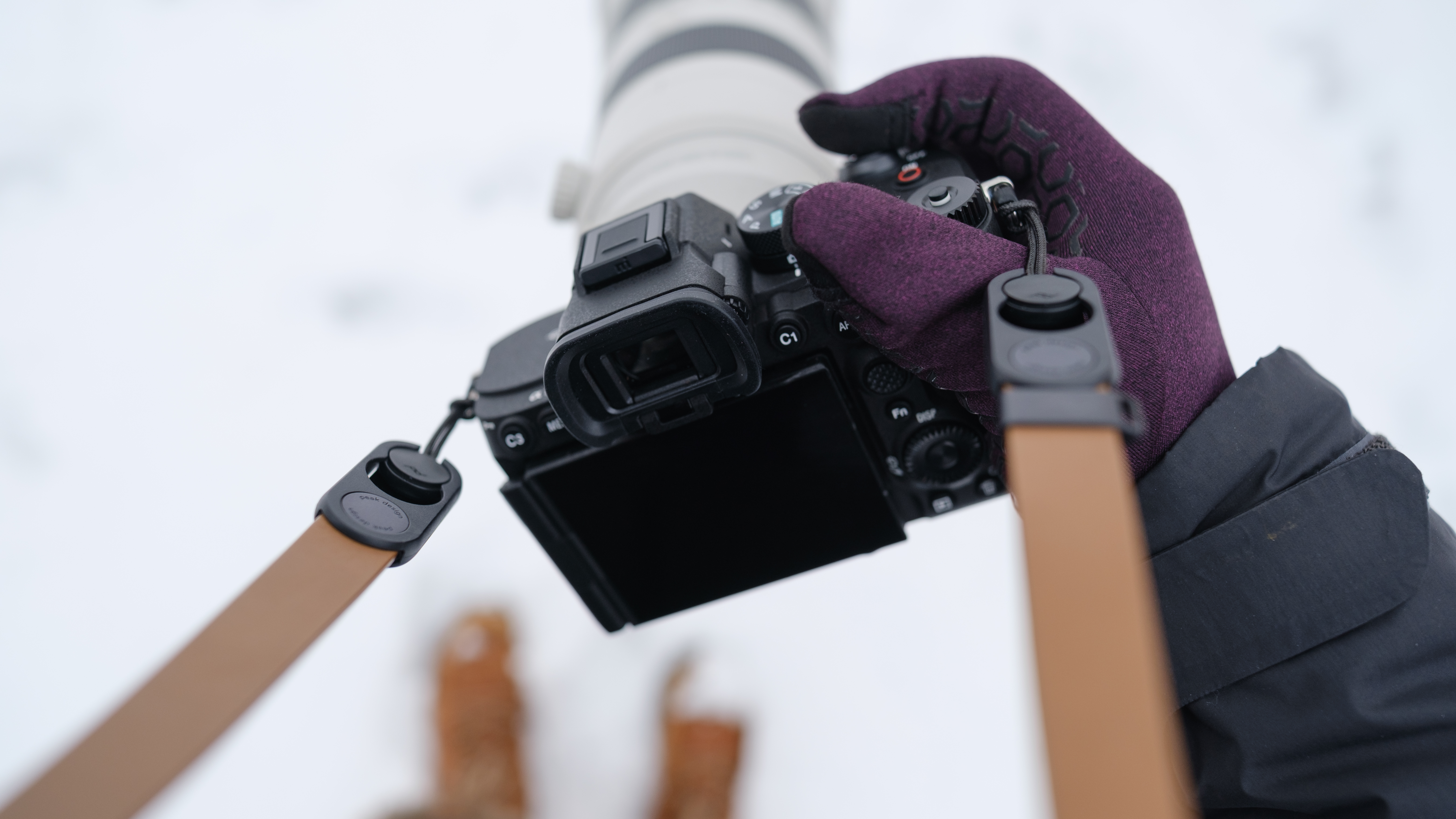Sony A7S III vs A7S II: what does the one camera have that the other doesn't?
The Sony A7S III vs A7S II is an obvious comparison to make, as both Sony cameras have 12MP sensors and 4K video...

It’s been five years since the original Sony A7S Mark II came out, but even this camera had 4K capture and in-body stabilization, so what has the Sony A7S Mark III got to justify the five-year wait, and is it worth an asking price around $2,000/£2,000 higher than the old model?
Let’s compare the key features and specifications to find out exactly what you are getting for your money.
Read more: Sony A7S Mark III vs Panasonic Lumix S1H vs Canon EOS R5
1. Sensor
Why you can trust Digital Camera World
• Sony A7S Mark II: 12.2MP full frame Exmor CMOS
• Sony A7S Mark III: 12.1MP full frame back-illuminated Exmor CMOS
The sensor size and resolution are the same for both cameras, but the A7S Mark III has a new back-illuminated sensor design for better high-ISO performance and 2x faster data readout for reduced rolling shutter effect.
Check out our guide to the best lenses for the Sony A7S III & A7S II
2. ISO range
• Sony A7S Mark II: ISO 100-102,400, expandable to ISO 50-409,600
• Sony A7S Mark III: ISO 80-102,400, expandable to ISO 40-409,600
Despite the switch to a back-illuminated sensor, Sony has not increased the maximum ISO setting, which remains at ISO 10,400 standard, or IOS 409,600 expanded. The lower ISO limit has dropped slightly, however, and there is a new, lower native ISO 640 setting for the S-Log 3 mode (down from ISO 1,600), so we would expect better image quality at high IOS settings and in S-Log 3 mode.
3. Resolution and frame rates
• Sony A7S Mark II: 4K UHD up to 30/25p, FHD up to 120p
• Sony A7S Mark III: 4K UHD up to 120/100p, FHD up to 240p
The maximum video resolution may be the same, but the A7S Mark III brings dramatic improvements in video frame rates, with four times the previous maximum frame rate for 4K UHD video and twice the frame rate for high-speed FHD capture.
4. Video quality and bitrate
• Sony A7S Mark II: 8-bit 4:2:0 internal, 8-bit 4:2:2 external
• Sony A7S Mark III: 10-bit 4:2:2 internal, 16-bit raw (via Ninja V) external
This is another area where the Sony A7S Mark III shows a massive improvement, as frame rate and resolution alone don’t tell the whole story. The older model can only capture 8-bit 4:2:0 video internally, but the A7S Mark III captures 10-bit 4:2:2 video of a much higher quality, especially for grading later. The A7S Mark III will also be able to output 16-bit raw video over HDMI to an Atomos Ninja V external recorder. To put the capture quality in context, the A7S Mark II has a maximum bitrate of 100Mbps, whereas the A7S Mark III goes up to 600Mbps.

5. Autofocus
• Sony A7S Mark II: 169-point contrast AF
• Sony A7S Mark III: 759-point phase detect AF, 425-point contrast AF
We forget how far mirrorless autofocus systems have advanced in the past few years. The 169-point contrast AF of the A7S Mark II now seems positively antiquated compared to the state of the art hybrid AF in the A7S III. For more leisurely filmmaking the older model might still be adequate, but for faster run and gun shooting, the A7S Mark III looks in a different league, especially with the latest advances in Sony’s Eye AF, its touch tracking system and the power of the new BIONZ XR image processor.
6. Electronic viewfinder
• Sony A7S Mark II: XGA OLED, 2.359m dots, 0.78x magnification
• Sony A7S Mark III: QXGA OLED, 9.44m does, 0.9x magnification
The Sony A7S Mark II’s electronic viewfinder was good for its time and still not bad today, but the 9.44m dot EVF in the A7S Mark III completely trounces it for resolution – and it also offers a larger viewfinder image. Both cameras are designed for video, of course, so the rear screen (below) is arguably more important.

7. Rear LCD
• Sony A7S Mark II: 3-inch tilting, 1.229m dots
• Sony A7S Mark III: Fully vari-angle touchscreen
The tilting screen on the A7S II is fine, if a little small for 16:9 display, but the A7S Mark III swaps it for a fully vari-angle touchscreen, which is a major improvement and a first for Sony Alpha cameras.
8. Storage
• Sony A7S Mark II: 1x SDXC (UHS-I)
• Sony A7S Mark III: 2x SDXC (UHS-II)/CFexpress Type A
The A7S Mark III has twice as many card slots as the A7S Mark II, and twice the choice of card formats. The A7S Mark III supports UHS-II SDXC cards, but the slot in the A7S Mark II is UHS-I. The internal storage used by the A7S Mark II might have been adequate at the time if you invested in fast UHS-I cards, but didn’t have much in reserve.
9. Continuous shooting
• Sony A7S Mark II: 5fps, up to 24 uncompressed raw files
• Sony A7S Mark III: 10fps, over 1,000 uncompressed raw files
This will only be relevant to videographers also using the Sony A7S for stills, but the difference is staggering. The A7S Mark III offers twice the frame rate of the A7S Mark II, and with a colossal buffer capacity made possible by its BIONZ XR processor and CFexpress memory cards.
10. Battery life
• Sony A7S Mark II: 370 shots/60min video (LCD)
• Sony A7S Mark III: 600 shots/95min video (LCD)
The A7S Mark III is the last of the Sony A7 models to adopt the new ‘Z’ battery, and this gives it a 60% improvement in battery life for both stills and video. It also has 3-4x faster charging via a USB Type C PD connection. Both are major advantages for video shooting, where battery life can be a constant concern.

Sony A7S Mark III vs A7S Mark II: the verdict
On paper, it sounds as if the Sony A7S Mark III hasn’t moved things along very far at all. It still only shoots 4K video, just as its five-year-old predecessor does.
However, the A7S Mark III is a much more powerful camera. It can capture 4K video at four times the frame rate and FHD video at twice the old camera’s speed. The A7S Mark III captures at a much higher quality too, with 10-bit 4:2:2 internal capture and the potential for 16-bit raw output to a Ninja V external recorder.
Sony’s new camera has a vastly more sophisticated AF system, twin card slots supporting faster cards, a much better EVF, a fully articulating rear screen and 60% better battery life.
The Sony A7S Mark II might have been at the top of the 4K game five years ago but now looks old and underpowered, and while the new A7S Mark III might still be ‘only’ 4K, it has the power, the performance and the capture quality to produce 4K video of the very highest quality.
Read more:
• The best Sony cameras
• Best 4K cameras for filmmakers
• Best vlogging cameras
• Best cinema cameras
The best camera deals, reviews, product advice, and unmissable photography news, direct to your inbox!

Rod is an independent photography journalist and editor, and a long-standing Digital Camera World contributor, having previously worked as DCW's Group Reviews editor. Before that he has been technique editor on N-Photo, Head of Testing for the photography division and Camera Channel editor on TechRadar, as well as contributing to many other publications. He has been writing about photography technique, photo editing and digital cameras since they first appeared, and before that began his career writing about film photography. He has used and reviewed practically every interchangeable lens camera launched in the past 20 years, from entry-level DSLRs to medium format cameras, together with lenses, tripods, gimbals, light meters, camera bags and more. Rod has his own camera gear blog at fotovolo.com but also writes about photo-editing applications and techniques at lifeafterphotoshop.com
